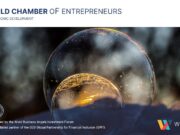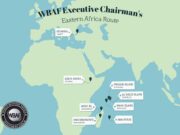The convergence of Artificial Intelligence (AI) and human singularity within the professional environment has attracted significant scholarly interest, unveiling a range of effects and possibilities. This review of existing literature seeks to summarize the dominant discussions, significant discoveries, and emerging trends in this field. This compilation serves as a fundamental basis for the discussion presented in the white paper authored by Wassim Jarkas, who serves as a Senator representing Bahrain at the World Business Angels Investment Forum and a Senior Director at stc Bahrain.
 In recent decades, the advent of Artificial Intelligence (AI) has been a catalyst for discussion, deliberation, and in some cases, discord, within the professional and academic communities. The discourse often orbits around the potential ramifications of AI on the future of the global workforce. Pessimistic narratives foresee a scenario where AI usurps human jobs, leading to widespread unemployment and socio-economic disarray. On the flip side, a more nuanced and optimistic perspective envisions AI as a potent tool for augmenting the quality and efficiency of human labor rather than replacing it. This dichotomy of viewpoints underscores the need for a deeper, more nuanced exploration of AI’s role and potential in modern work ecosystems.
In recent decades, the advent of Artificial Intelligence (AI) has been a catalyst for discussion, deliberation, and in some cases, discord, within the professional and academic communities. The discourse often orbits around the potential ramifications of AI on the future of the global workforce. Pessimistic narratives foresee a scenario where AI usurps human jobs, leading to widespread unemployment and socio-economic disarray. On the flip side, a more nuanced and optimistic perspective envisions AI as a potent tool for augmenting the quality and efficiency of human labor rather than replacing it. This dichotomy of viewpoints underscores the need for a deeper, more nuanced exploration of AI’s role and potential in modern work ecosystems.
The central proposition of the optimistic perspective is that AI, when leveraged appropriately, can act as a force multiplier for human capabilities within the workforce. It offers a vista of possibilities—automation of mundane and repetitive tasks, provision of data-driven insights, enhancement of quality control measures, and acceleration of decision-making processes, among others. These AI-driven advantages are posited to free up human resources, enabling individuals to engage in more complex, creative, and ultimately, more fulfilling aspects of their work.
In the healthcare sector, for instance, AI’s prowess in handling administrative chores like scheduling and billing can potentially liberate medical practitioners to dedicate more time to patient care. Similarly, in the manufacturing domain, AI-powered quality control systems can minimize human errors, thereby enhancing product quality and consumer satisfaction.
However, the narrative also urges a recognition of the unique, irreplaceable value of human singularity—the ability to think abstractly, empathize, exercise ethical judgment, and innovate. These quintessentially human traits are imperative in jobs that entail complex decision-making, human interaction, and ethical discernment. While AI can diagnose a disease based on a set of symptoms, it lacks the capability to empathize with a patient’s anxieties or comprehend the ethical implications of medical decisions.
The intent of this white paper is to delve into the symbiotic relationship between AI and human singularity, elucidating how a harmonious interaction between the two can not only enhance the efficiency and quality of the workforce but also foster a more human-centric work environment. Through a meticulous examination of real-world applications, case studies, and data-driven insights, this document aims to provide a balanced, well-informed perspective on the discourse, steering towards a future where AI and human singularity coalesce to redefine the essence and efficiency of the global workforce.
Here you can download the White Paper: The Harmonious Symbiosis of AI and Human Singularity: Advancing Workforce Efficiency and Quality



























